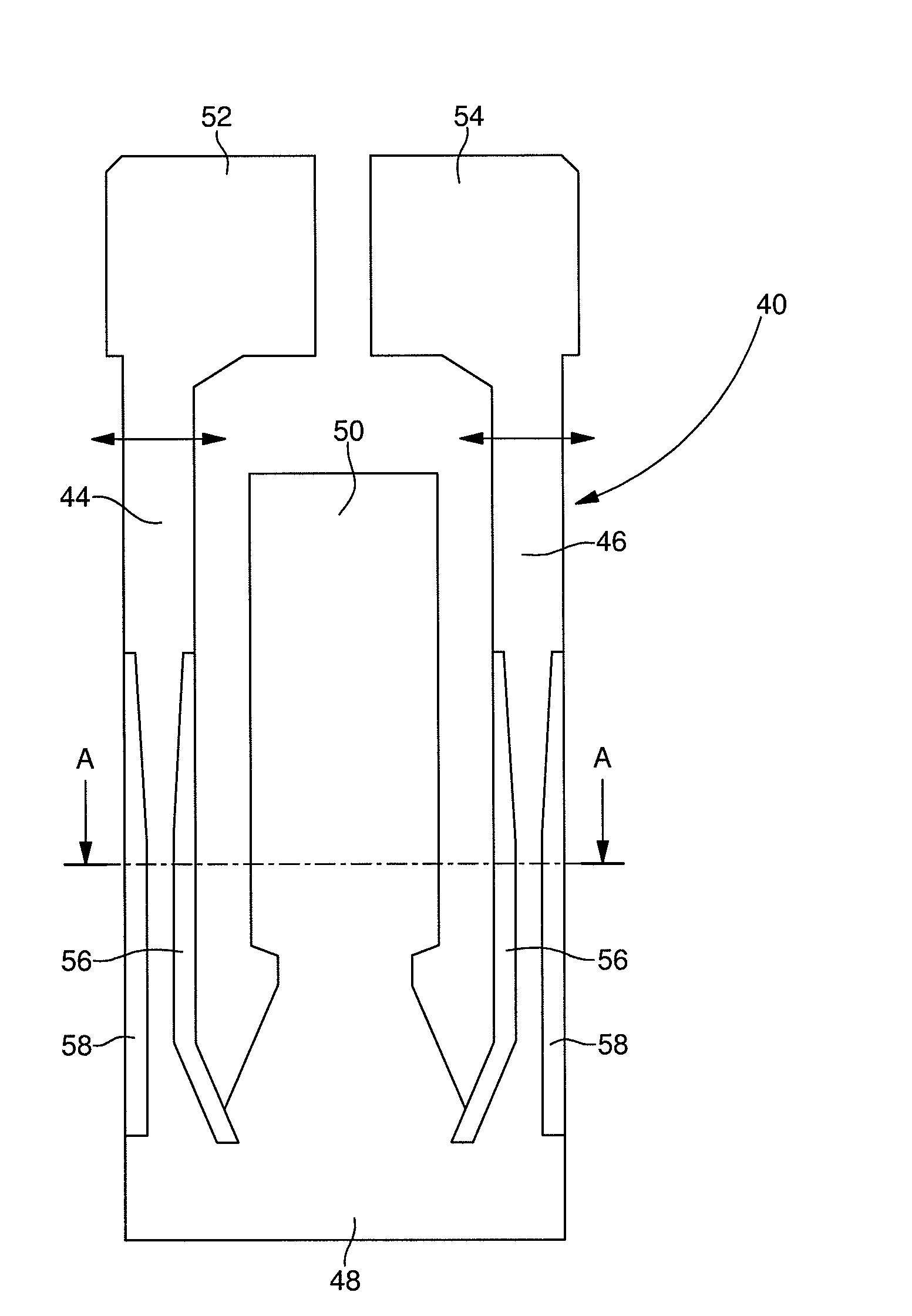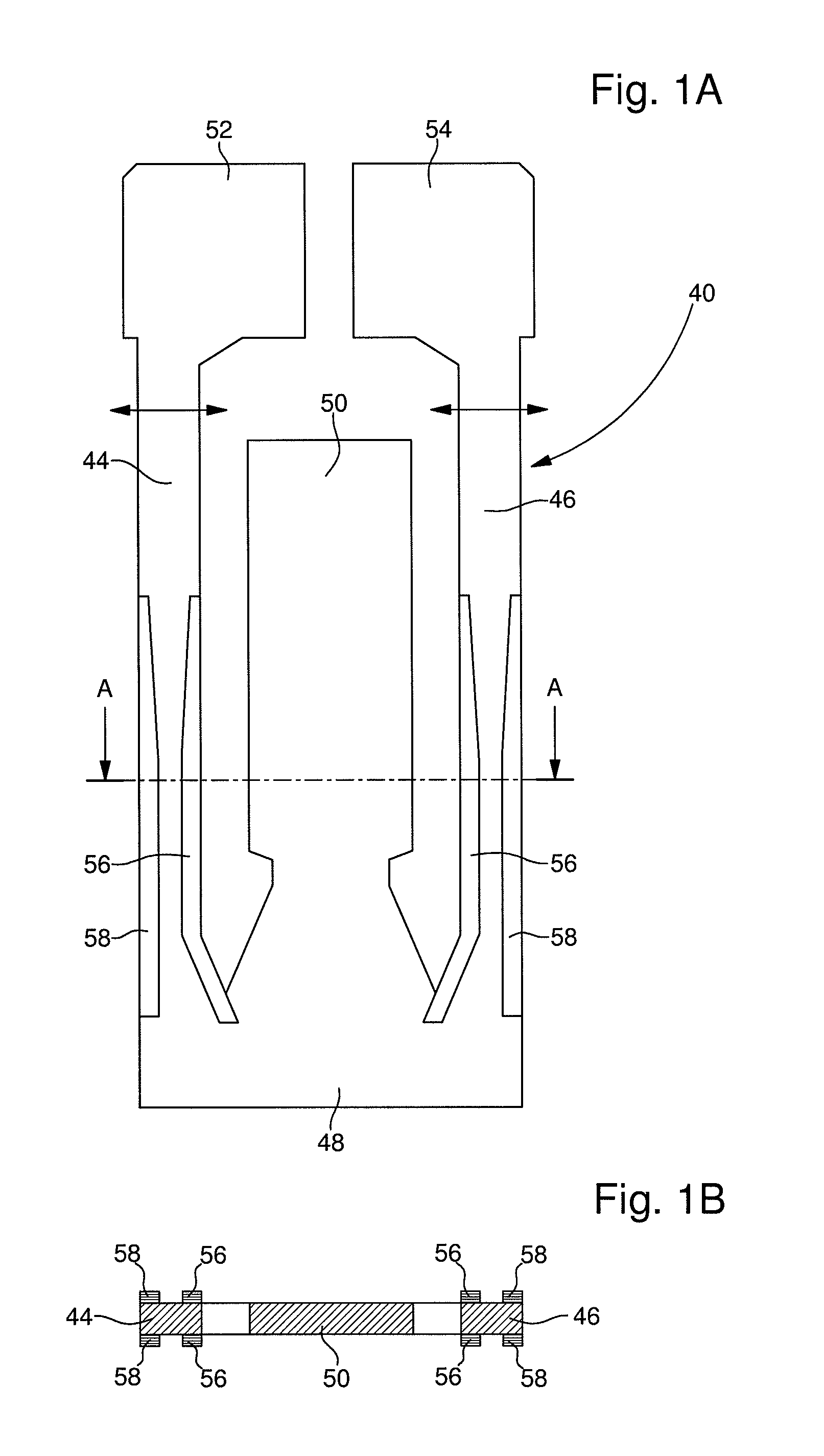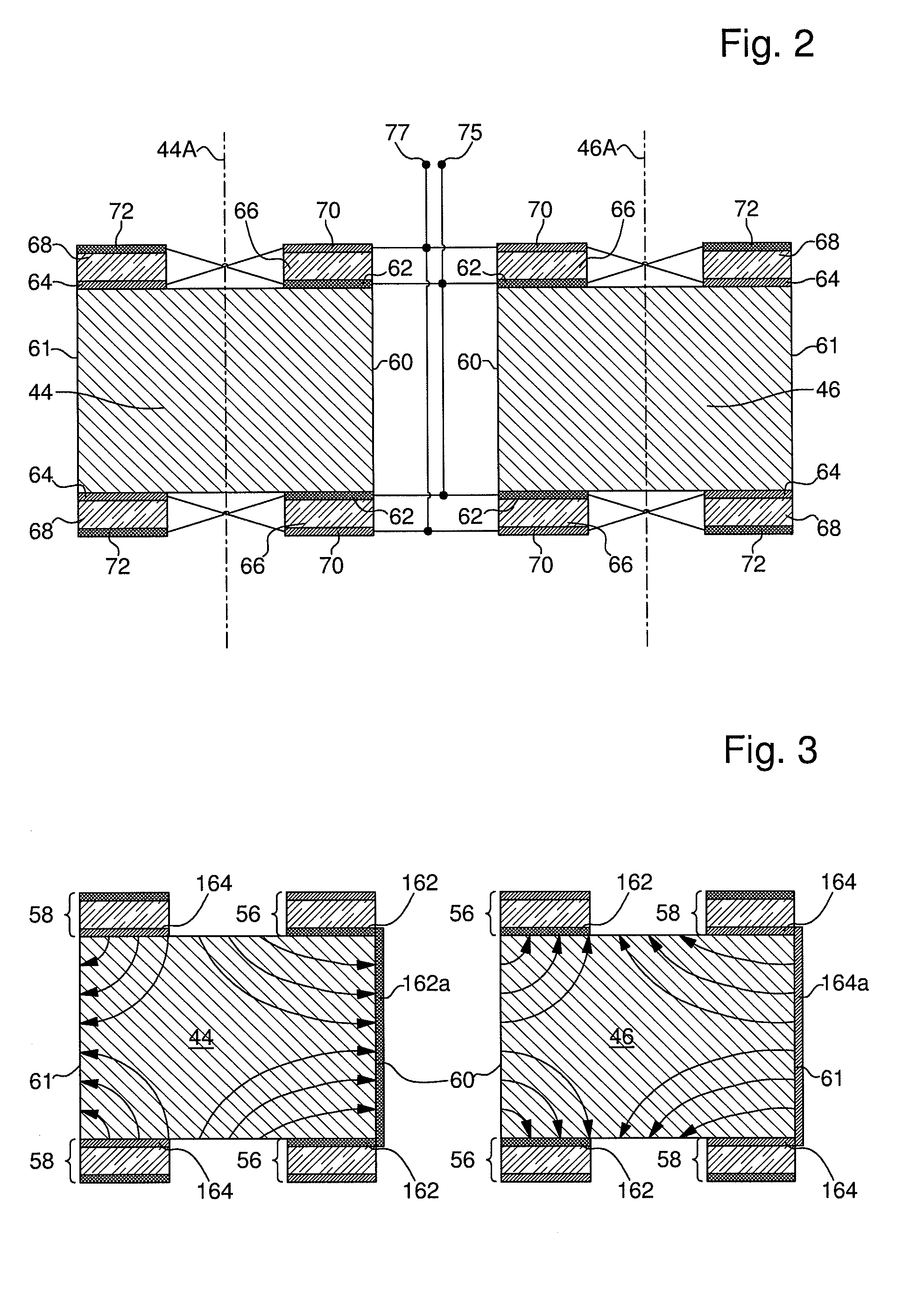Piezoelectric thin-film tuning fork resonator
a thin-film resonator and piezoelectric technology, applied in piezoelectric/electrostrictive/magnetostrictive machines, piezoelectric/electrostriction/magnetostriction devices, electrical apparatus, etc., can solve the problem of large temperature coefficient (tce) of young modulus silicon, large length of additional step of silicon dioxide coating, etc. problem, to achieve the effect of increasing the merit of the oscillator
- Summary
- Abstract
- Description
- Claims
- Application Information
AI Technical Summary
Benefits of technology
Problems solved by technology
Method used
Image
Examples
first embodiment
[0025]FIGS. 1A and 1B show a piezoelectric thin-film tuning fork resonator according to the invention. The resonator 40 includes a tuning fork shaped part with two vibrating arms 44 and 46 joined by a base 48. A fixed central arm 50 is further attached to the base in between the vibrating arms. The whole assembly is made out of a single piece of quartz.
[0026]In the illustrated example, the free end of each vibrating arm 44, 46 carries a flipper (referenced 52 and 54 respectively). By adding mass to the end of the vibrating arms, the flippers make it possible to reduce the length of the arms without altering the performances of the resonator. The presence of the flippers also ensures a better distribution of the mechanical stress along the arms.
[0027]As previously mentioned, the illustrated resonator comprises a central arm 50 that is located between arms 44 and 46 and is connected to the base 48. Central arm 50 is a fixing arm that is used for fixing resonator 40 to a support. As sh...
second embodiment
[0041]The thin-film tuning fork resonator schematically represented in FIG. 3 corresponds to the present invention. The resonator of FIG. 3 differs from that of FIG. 2 in that the first electrodes 162 on the main surfaces of vibrating arm 44 are joined together by an additional lateral portion 162a that covers the inner side (or edge) 60 of the vibrating arm 44. Furthermore, in a similar fashion, the second electrodes 164 on the main surfaces of vibrating arm 46 are joined together by an additional lateral portion 164a that covers the outer side (or edge) 61 of the vibrating arm 46. Considering the general layout of the electrostatic field lines represented in FIG. 3, it is straightforward to understand that the presence on one side of each arm of an additional lateral electrode portion increases the piezoelectric coupling between the quartz and the source of electrical excitation connected to the electrodes.
third embodiment
[0042]The thin-film tuning fork resonator schematically represented in FIG. 4 corresponds to the present invention. The resonator of FIG. 4 differs from that of FIG. 3 in that a first lateral electrode 262b is formed over the outer side (or edge) 61 of vibrating arm 44 opposite the additional lateral portion 262a, and in that in a similar fashion a second lateral electrode 264b is formed over the inner side (or edge) 60 of vibrating arm 46 opposite the additional lateral portion 264a. The first lateral electrode 262b is connected to the other first electrodes and the second lateral electrode 264b is connected to the other second electrodes. One possible way of implementing these connections is to deposit conductive tracks of metal film (not shown) using a vapor deposition mask. The conductive tracks are preferably formed between the electrodes and the base 48. Referring again to FIG. 3 and to the general layout of the electrostatic field lines, it is straightforward to understand th...
PUM
 Login to View More
Login to View More Abstract
Description
Claims
Application Information
 Login to View More
Login to View More - R&D
- Intellectual Property
- Life Sciences
- Materials
- Tech Scout
- Unparalleled Data Quality
- Higher Quality Content
- 60% Fewer Hallucinations
Browse by: Latest US Patents, China's latest patents, Technical Efficacy Thesaurus, Application Domain, Technology Topic, Popular Technical Reports.
© 2025 PatSnap. All rights reserved.Legal|Privacy policy|Modern Slavery Act Transparency Statement|Sitemap|About US| Contact US: help@patsnap.com



